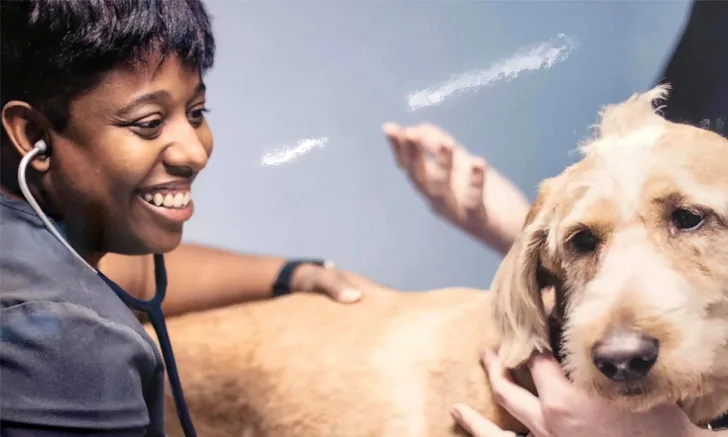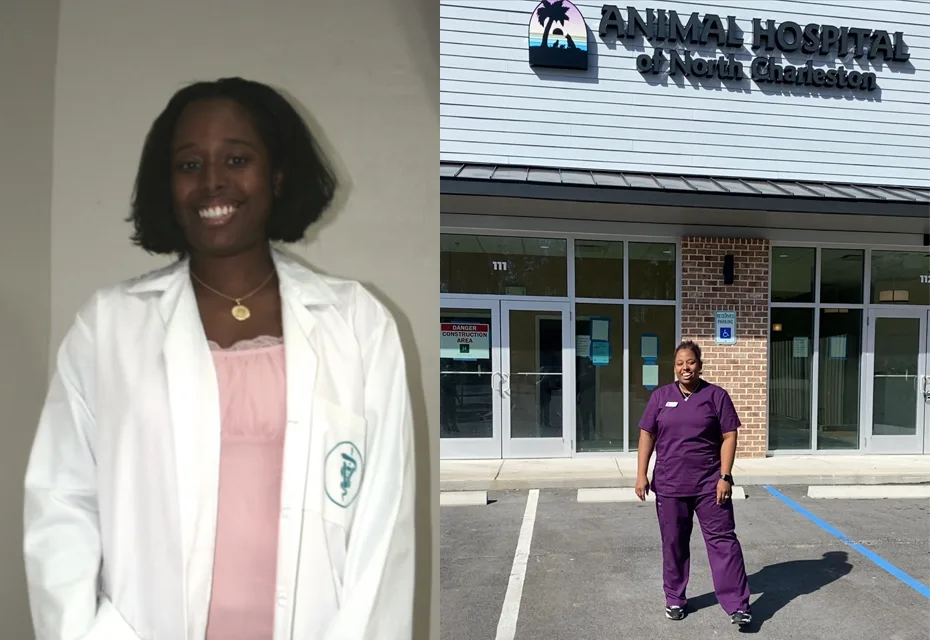
Just 1.2% of US veterinarians are Black and though approximately 64% of practicing veterinarians in the US are women,1 less than half of veterinary practices in the US are owned by women.2 But these numbers are not the future of veterinary medicine.
Kristin Ingram, a Black veterinarian and practice owner in South Carolina, is creating the veterinary practice of her dreams.
Dr. Ingram considers herself fortunate to have grown up living next door to a veterinary surgeon who encouraged her aspirations from the time she was 6 years old. But her mentor wasn’t Black. “He knew that diversity was needed,” said Ingram. “I think he really wanted to see a young Black woman make it in this field.”
Although initiatives from veterinary schools, professional organizations, and the animal healthcare industry are making strides, the profession is still mostly white—93% white, according to 2021 U.S. Bureau of Labor Statistics.1
Overcoming Unexpected Challenges
Succeeding in a profession where African American people are underrepresented was not the main challenge for Ingram, though. Struggling with overwhelming grief following her mother’s death during Ingram’s junior year at college, Ingram said her grades “took a pretty big hit.”
Instead of applying to veterinary schools, she graduated with a degree in wildlife science, worked as a research assistant, and then started a family. “But veterinary medicine was where I belonged,” Dr. Ingram said. “I had the drive to do it, and to also make my mentor proud. I kept pushing myself until I got there.”
Getting there meant going back to school for more credits and a better GPA, and getting more clinical experience by working as a veterinary technician.

Earning a spot at Ross University’s School of Veterinary Medicine in St. Kitts uprooted the family to the Caribbean. After moving stateside for clinical training at Auburn University, Ingram and her family eventually settled in South Carolina, where Ingram took an associate veterinarian position at the Animal Hospital of North Charleston.
“I feel lucky that I found my veterinary “home” in North Charleston,” Ingram said.
Building a Home, Building a Business
After a few years, Dr. Ingram became the medical director when her employer sold the practice to Veterinary Practice Partners, a company designed to take care of the business while the owner focuses on the medical practice. Over the next 8 years, Ingram did not lose sight of her goal of practice ownership, using her time as medical director to prepare for ownership. “My father always pushed me and my sister to get into a field where we could own our own business,” she said.
Ingram sought mentoring from local practice owners (including her previous employer). She also gleaned business ownership insights from her husband, a financial management professional, and consulted with “money gurus” who advised her that solo ownership could be more profitable than a partnership.
But she already knew that a balance sheet couldn’t account for the toll that going it alone could take. “It’s very hard to run a successful business and be a veterinarian—and have enough time for family and a life outside of medicine,” she said. When she felt she had a handle on the business side of medicine, Dr. Ingram became a co-owner with Veterinary Practice Partners.

On preparing for practice ownership: “I’m a pretty big planner. I like to know exactly what I'm getting myself into. Although you are never going to know every aspect of it, it’s important to understand as much as you can.”
Mentorship Is the Key
Ingram notes that as a practice owner, “at the end of the day, I am always the last word.” But the reward is getting to build the kind of practice where she always wanted to work. Ingram envisions clinical practices where “everyone that could possibly be represented, is represented.”
Know an extraordinary veterinarian?
We want to feature them! Nominate colleagues doing extraordinary work in the community. Fill out our submission form to nominate a veterinarian or veterinary team member here.
From her perspective, mentoring is one sure way to help that happen. “Everyone of us can do our part to make this a melting pot of a field,” she said. Her main advice to mentees? Stay focused, stay humble, and find people who will be your cheerleaders.
Ingram credits her success to support from her family and mentors, and careful planning and holding fast to her dreams. From her parents, Ingram learned the best way to get past barriers was “to always have people in your corner” who are well respected in their field. From her childhood mentor, a board-certified veterinary surgeon, to connections she made as an adult, Ingram consistently sought supportive guidance.
In addition, Ingram acknowledges that previous generations of Black veterinarians opened doors of opportunity she walked through. “I was lucky enough to be born in a time when our colleagues were much more open minded,” she said. “We’re scientists, which also makes us very open minded.”
However, some pet owners are surprised to see a Black veterinarian. After all, there aren’t that many. “But most people that I encounter feel that myself, my veterinarians, and my staff, are all very compassionate, and that we do our best to provide quality medicine and to be kind. And that is what's most important to people, and to me,” said Dr. Ingram.
“If they can get a veterinarian of color who embodies all of those things, so much the better.”